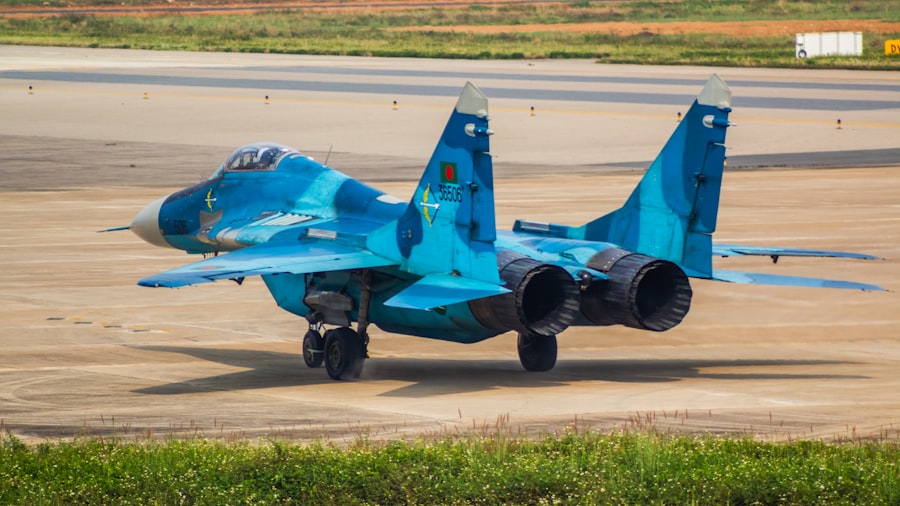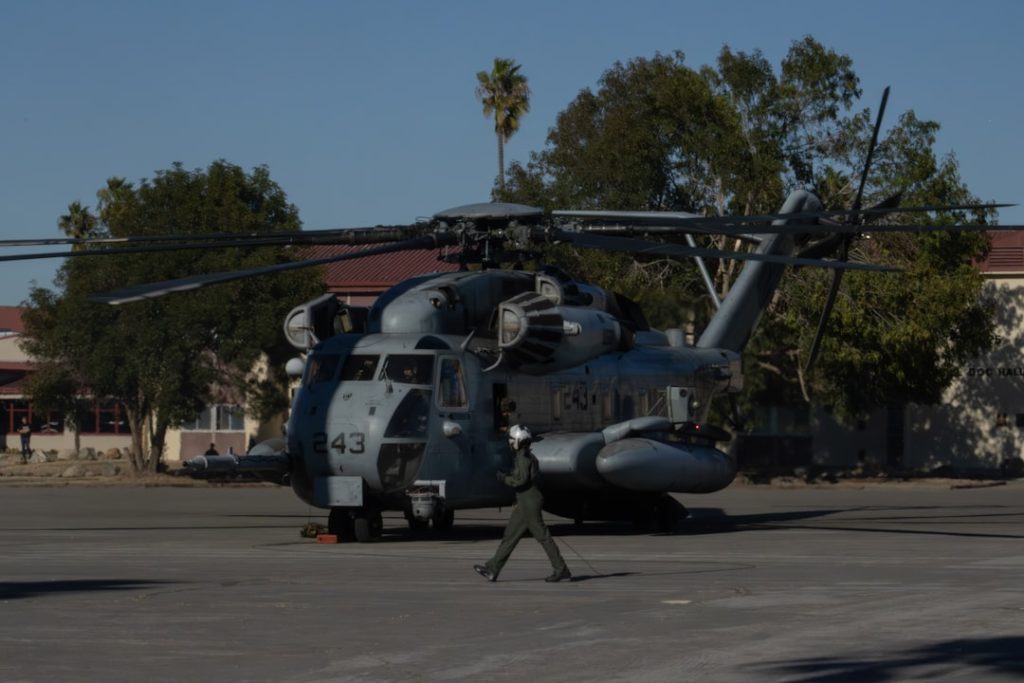Aerospace and defense technology represents a critical intersection of engineering, innovation, and national security. This sector encompasses a wide array of disciplines, including aeronautics, astronautics, and military systems, all of which are essential for maintaining a nation’s security and advancing its capabilities in both civilian and military applications. The aerospace industry is responsible for the design, development, and production of aircraft, spacecraft, satellites, and related systems, while the defense sector focuses on technologies that enhance military effectiveness and protect national interests.
The synergy between these two fields has led to groundbreaking advancements that not only bolster defense capabilities but also contribute to commercial aviation and space exploration. The evolution of aerospace and defense technology has been driven by a combination of geopolitical factors, technological advancements, and the increasing complexity of global threats. As nations face new challenges ranging from cyber warfare to terrorism, the demand for sophisticated defense systems has surged.
Concurrently, the commercial aerospace sector has seen remarkable growth, with innovations in fuel efficiency, passenger comfort, and safety. This dual focus on military and civilian applications has fostered an environment ripe for innovation, where advancements in one area often translate into benefits for the other. As we delve deeper into the various facets of aerospace and defense technology, it becomes evident that this field is not only about creating advanced machinery but also about ensuring the safety and security of nations in an ever-evolving landscape.
Key Takeaways
- Artificial intelligence is revolutionizing aerospace and defense through enhanced data analysis and autonomous systems.
- Advances in aircraft design and manufacturing are improving efficiency, performance, and sustainability.
- Space exploration plays a critical role in developing cutting-edge defense technologies and strategic capabilities.
- Innovations in missile defense systems are increasing accuracy, speed, and interception capabilities.
- The integration of 3D printing and cybersecurity measures is transforming production processes and protecting aerospace assets.
The Impact of Artificial Intelligence in Aerospace & Defense
Artificial intelligence (AI) has emerged as a transformative force within the aerospace and defense sectors, revolutionizing how data is processed, decisions are made, and operations are conducted. In military applications, AI algorithms are being employed to analyze vast amounts of data from various sources, enabling faster and more accurate decision-making. For instance, AI-driven systems can process intelligence reports, satellite imagery, and sensor data in real-time, providing military commanders with actionable insights that enhance situational awareness.
This capability is particularly crucial in modern warfare, where the speed of information can determine the outcome of engagements. Moreover, AI is playing a pivotal role in autonomous systems, including unmanned aerial vehicles (UAVs) and ground robots. These systems leverage machine learning algorithms to navigate complex environments, identify targets, and execute missions with minimal human intervention.
For example, the U.S. Air Force’s Skyborg program aims to develop AI-powered drones that can operate alongside manned aircraft, enhancing combat effectiveness while reducing risks to human pilots. The integration of AI into these platforms not only increases operational efficiency but also allows for more flexible and adaptive responses to dynamic battlefield conditions.
As AI continues to evolve, its applications in aerospace and defense are expected to expand further, leading to even more sophisticated systems capable of addressing emerging threats.
Advancements in Aircraft Design and Manufacturing

The design and manufacturing processes of aircraft have undergone significant transformations over the past few decades, driven by advancements in materials science, computer-aided design (CAD), and manufacturing technologies. Modern aircraft are increasingly constructed using composite materials that offer superior strength-to-weight ratios compared to traditional metals. For instance, the Boeing 787 Dreamliner utilizes carbon-fiber-reinforced polymer composites extensively throughout its structure, resulting in reduced weight and improved fuel efficiency.
This shift towards lightweight materials not only enhances performance but also contributes to lower operational costs for airlines. In addition to material innovations, the application of advanced manufacturing techniques such as additive manufacturing (3D printing) has revolutionized how aircraft components are produced. This technology allows for the creation of complex geometries that were previously impossible or prohibitively expensive to manufacture using traditional methods.
For example, GE Aviation has successfully employed 3D printing to produce fuel nozzles for jet engines, resulting in parts that are lighter and more efficient than their conventionally manufactured counterparts. Furthermore, 3D printing enables rapid prototyping and customization of components, allowing manufacturers to respond quickly to changing market demands or specific customer requirements. As these advancements continue to reshape aircraft design and manufacturing processes, they promise to enhance performance while reducing costs across the aerospace industry.
The Role of Space Exploration in Defense Technology
| Metric | Description | Example/Value | Impact on Defense Technology |
|---|---|---|---|
| Satellite Reconnaissance | Number of active military satellites | 300+ | Enhanced global surveillance and intelligence gathering |
| Space-Based Missile Warning Systems | Detection time for missile launches (seconds) | Less than 60 seconds | Improved early warning and response capabilities |
| GPS and Navigation | Accuracy of military GPS (meters) | 1-3 meters | Precision targeting and troop movement coordination |
| Space Situational Awareness | Number of tracked space objects | Over 27,000 | Prevention of collisions and monitoring of potential threats |
| Research & Development Investment | Annual funding for space-defense tech (billion USD) | 15+ | Advancement of cutting-edge defense technologies |
| Anti-Satellite (ASAT) Capabilities | Number of countries with operational ASAT weapons | 5 | Deterrence and defense against hostile space assets |
Space exploration has long been intertwined with defense technology, as advancements in space capabilities have significant implications for national security. The ability to deploy satellites for communication, reconnaissance, and navigation has transformed military operations by providing critical information that enhances situational awareness on the battlefield. For instance, GPS satellites enable precise navigation for both military assets and civilian applications, while reconnaissance satellites provide real-time imagery that informs strategic decision-making.
Moreover, the increasing militarization of space has led to the development of new defense technologies aimed at protecting national interests beyond Earth’s atmosphere. Countries are investing in anti-satellite weapons and space-based missile defense systems to counter potential threats from adversaries who may seek to disrupt or destroy critical space assets. The establishment of organizations such as the U.S.
Space Force underscores the growing recognition of space as a domain of warfare that requires dedicated resources and strategic planning. As nations continue to explore the cosmos and expand their capabilities in space technology, the implications for defense will only become more pronounced.
Innovations in Missile Defense Systems
Missile defense systems represent a crucial component of national security strategies worldwide, designed to detect, track, intercept, and destroy incoming missiles before they can reach their targets. Recent innovations in this field have focused on enhancing the effectiveness of these systems through advanced radar technologies, improved interception methods, and integrated command-and-control networks. For example, the Aegis Ballistic Missile Defense System employs sophisticated radar systems capable of tracking multiple targets simultaneously while coordinating interceptors launched from naval vessels.
One notable advancement in missile defense technology is the development of directed energy weapons (DEWs), which utilize high-energy lasers or microwave systems to neutralize incoming threats. These systems offer several advantages over traditional kinetic interceptors, including lower operational costs per engagement and virtually unlimited magazine capacity as long as power is available. The U.S.
Navy’s Laser Weapon System (LaWS) is an example of a DEW that has been successfully tested aboard naval vessels, demonstrating its potential for use against small boats or drones as well as missile threats.
The Future of Unmanned Aerial Vehicles (UAVs)

Unmanned aerial vehicles (UAVs), commonly known as drones, have rapidly evolved from niche military tools into versatile platforms with applications across various sectors. In the defense realm, UAVs are increasingly being utilized for intelligence gathering, surveillance missions, and precision strikes with minimal risk to human operators. The proliferation of UAV technology has led to a diverse range of platforms designed for specific missions; for instance, the MQ-9 Reaper drone is renowned for its long endurance and payload capacity, making it ideal for reconnaissance and targeted strikes.
Looking ahead, the future of UAVs is poised for further innovation as advancements in AI and autonomy continue to shape their capabilities. Emerging concepts such as swarming technology involve deploying multiple UAVs that can communicate with one another to execute complex missions collaboratively. This approach enhances operational flexibility while complicating adversaries’ defensive measures due to the sheer number of targets presented simultaneously.
Additionally, developments in hybrid UAVs that can transition between aerial and ground operations are being explored for applications ranging from logistics support to search-and-rescue missions.
Cybersecurity in Aerospace & Defense
As aerospace and defense technologies become increasingly interconnected through digital networks and data-sharing platforms, cybersecurity has emerged as a paramount concern within these sectors. The reliance on software-driven systems exposes vulnerabilities that adversaries may exploit to disrupt operations or compromise sensitive information. High-profile cyberattacks on defense contractors have underscored the need for robust cybersecurity measures to protect intellectual property and ensure operational integrity.
To address these challenges, organizations within the aerospace and defense sectors are investing heavily in cybersecurity initiatives aimed at safeguarding their systems against potential threats. This includes implementing advanced encryption protocols for data transmission, conducting regular vulnerability assessments, and fostering a culture of cybersecurity awareness among employees. Additionally, collaboration between government agencies and private industry is essential for sharing threat intelligence and developing best practices that enhance overall resilience against cyber threats.
The Integration of 3D Printing in Aerospace & Defense Technology
The integration of 3D printing technology into aerospace and defense has opened new avenues for innovation in design and manufacturing processes. This additive manufacturing technique allows for the creation of complex components with reduced material waste compared to traditional subtractive methods. In aerospace applications, 3D printing is being utilized to produce everything from engine parts to structural components with intricate geometries that optimize performance while minimizing weight.
One notable example is the use of 3D printing by NASA for producing rocket engine components for its Space Launch System (SLS). By leveraging this technology, NASA can rapidly prototype parts while reducing lead times associated with traditional manufacturing methods. Furthermore, 3D printing enables on-demand production capabilities that can be particularly advantageous in military operations where supply chains may be disrupted or where rapid deployment is necessary.
As 3D printing continues to evolve within aerospace and defense sectors, its potential applications are expanding beyond component manufacturing to include entire systems integration. The ability to print complex assemblies or even entire drones on-site could revolutionize logistics and operational capabilities in remote or austere environments. This transformative technology not only enhances efficiency but also fosters innovation by allowing engineers to experiment with novel designs without incurring prohibitive costs associated with traditional manufacturing processes.
In summary, aerospace and defense technology is a dynamic field characterized by rapid advancements driven by innovation across various domains such as artificial intelligence, materials science, cybersecurity, and manufacturing techniques like 3D printing. As nations navigate an increasingly complex global landscape marked by evolving threats and opportunities for collaboration, the continued evolution of these technologies will play a pivotal role in shaping future capabilities within both military and civilian contexts.




